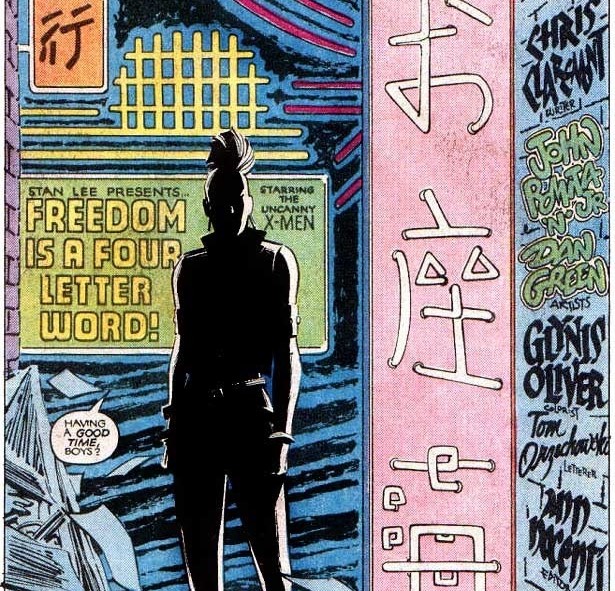Where X-Men elevated the idea of the internally-conflicted superhero group to new heights, Excalibur at times subverted that formula by bringing together characters with established connections to a wide variety of different genres. #xmen #excalibur 1/11 

A genre is ultimately a series of expectations within a story that a writer can play to or play off of. Genre is important in storytelling. Jacques Derrida notes that “As soon as genre announces itself, one must respect a norm...one must not risk impurity." 2/11 

The relationship to genre in comics is especially fraught, however, due to a widely held perception that comics are about superheroes alone, a perception that burdens the form with an expectation of genre conventions, even when it might like to explore other genres. 3/11 

Excalibur is, and isn’t, a superhero comic. Through the diversity of its cast, Excalibur announces non-superhero stories around individual cast members with pre-existing associations to non-superhero genres, thus empowering the book’s frequent non-superhero approach. 4/11 

Captain Britain draws in the mystical hero and Arthurian lore, but also a prominent 1980s genre of British comics that focused on the deconstruction of the superhero as a problematic symbol of Thatcher-like authoritarianism (see 2000 AD). 5/11 

Meggan is a character who draws in fairy mythology and soap opera. She may also, however, draw from 1970s feminist SF (eg Le Guin, Butler, Russ) and its use of supernatural bodies to comment on entrenched perceptions of gender in Western society. 6/11 

Nightcrawler is a liminal figure who can intersect elements of the gothic romance with traditional figures from the swashbuckling era of 20th century cinema (and adventure serials) quite dramatically. 7/11 

Phoenix is a cosmic being steeped in Wicca symbols who also happens to hail from an SF future dystopia. 8/11 

And Kitty, of course, announces a new genre as a character who laid the groundwork for plucky female protagonists challenging a metaphorical adolescence in the form of engagement with the supernatural (Buffy would solidify this genre). 9/11 

It may be for this reason that Excalibur’s most-famous story arc is the cross-time caper, which features encounters with innumerable genres of storytelling. The characters can slot into any of the genres quite easily due to their pre-existing genre diversity. 10/11 

Beyond this, the genre mosh-pit that is the Excalibur roster can even create escape velocity from genre altogether, simply by being diverse and resistant to genre-stability in a way that a lot of Marvel characters really aren’t. This relationship to genre can be empowering. 11/11 

• • •
Missing some Tweet in this thread? You can try to
force a refresh






















